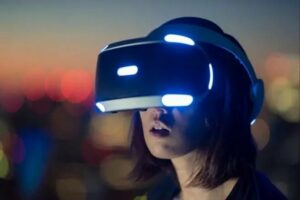Open Learning promotes self-direction and interconnection among students, allows them to learn at their own pace and balance their lives, and offers flexible and accessible education that is adapted to individual learning preferences and rhythms. It enables better collaboration between educators and students and expands the applicability of learning materials, making teaching more equitable and efficient, for example, people around the world can enjoy the same educational resources. Educational technology has developed from simple instruments like blackboards to complex systems like virtual reality, which reflecting both technological and sociological changes,. The advent of the Internet has made education more efficient. Through the Internet, we can see the ideas of different people and communicate with them, and learn a variety of different knowledge. Online courses, distance learning and massive open online courses (MOOCs) have enabled us to enter a more interesting education model, reduce commuting costs and save time. Through financial savings, increased accessibility, and increased flexibility for top-notch instruction, they revolutionize education. Limited teacher resources, uniform content, and a lack of flexibility are all resolved by digital transformation, which offers individualized learning experiences and a variety of learning options. Teachers can encourage positive behaviors and involve students in the learning process when they share educational duties with them and involve them in teaching and learning activities. Better learning outcomes are only achievable with active participation. I use tools like Zoom, Microsoft Teams, or Google Meet enable synchronous communication, allowing me to engage in live discussions, virtual group activities, and interactive presentations regardless of physical location. For example, during the epidemic, online courses helped us get through a difficult time, allowing us to bridge the distance and receive a good education. When learning a language, I can watch other people’s language expression videos on some online platforms, and comment and interact with them to improve my language comprehension and expression skills. Multimedia teaching can produce excellent audio-visual effects. Because human vision and hearing are the main channels for receiving information, the information obtained is also the largest. For example, some natural phenomena cannot be seen by students due to the constraints of time and space. When we taking history classes, we can intuitively understand some historical events by watching some virtual image and historical video materials, and improve our learning experience and interest. In general, the evolution of open learning theory, the history of educational technology, and learning theory has greatly improved the quality of our education, while transcending space, making learning resources more equal, and improving learners’ interest and efficiency.

Hi Beibei. I agree with you that open learning promotes independent learning and connectivity among students. Because it promotes self-directed learning and connectivity, it allows students to learn at their own pace, balancing their lives while increasing the flexibility and accessibility of education.Zoom is also my most frequently used open learning app, as well as Microsoft Teams, and I’ve blogged about the impact zoom had on us during the pandemic. The various open learning platforms have certainly made our learning lives easier. The natural phenomena and history you mention is a perspective I hadn’t noticed before. I’ll be looking for more videos and explanations of natural phenomena after reading your blog, thanks for the inspiration. I am looking forward to your next blog.